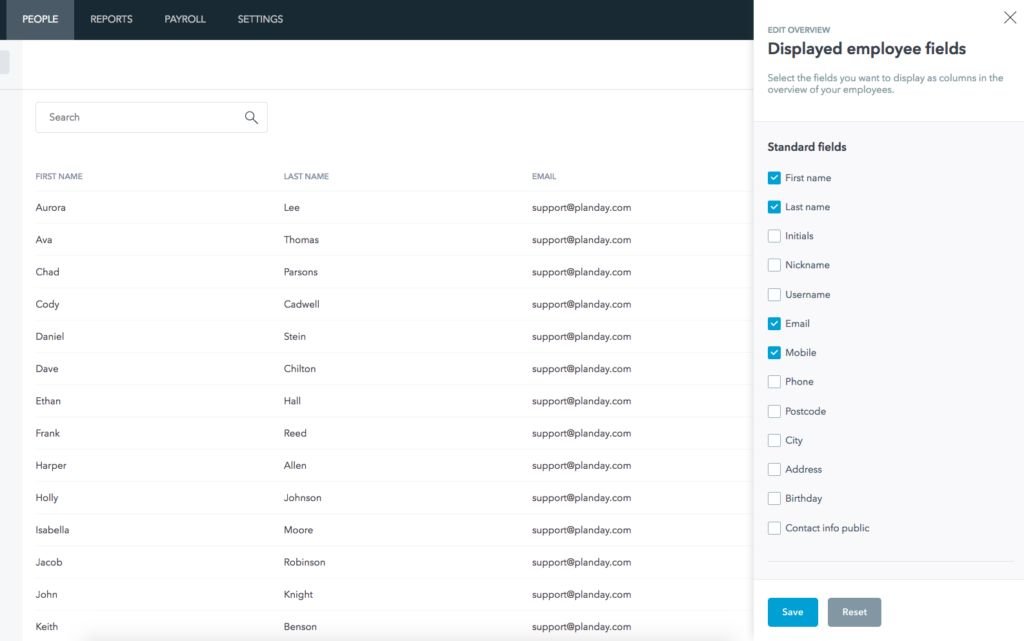
Article
5 min read
KPIs Every Restaurant Manager Should Measure
Kevin Ryan
Jun 7, 2021
Chapters
KPIs Every Restaurant Manager Should Measure
KPIs for restaurant Managers
Sales and profitability KPIs
- Cash flow
- Cost of goods sold
- Labour cost percentage
- Sales per employee per hour
- Revenue per available seat hour
- Table turn rate
- Average table occupancy
- Spend per head
- Employee turnover
Customer experience KPIs
- Online reviews
- Customer retention rate
Marketing KPIs
- Social engagement
- Website traffic
Why are KPIs important for restaurant managers?
The best way for managers to gain visibility into how their restaurant is performing is to collect and measure both team and financial performance through KPIs. With KPIs, you can quickly identify any problems in the way you’re running your restaurant and act accordingly, or spend time on nurturing the areas in which you’re doing well.
The restaurant industry has always been a competitive one. Tight margins and changing food trends make managing a successful restaurant difficult. Compounding this even further, restaurateurs can often feel like they are trapped in a fog – even with a regular physical presence in the restaurant, it can be difficult to keep tabs on their staff and daily operations.
What are KPIs?
KPIs, otherwise known as Key Performance Indicators (or Leading Indicators) are measurable data points to help show that your restaurant is on track to meeting its goals. KPIs will also help you determine if you’re spending too much time and money on something that’s not worth it and prioritize your focus accordingly.
The list of restaurant KPIs is long and not all of them will be relevant to you. The key here is to choose the KPIs that are most relevant to your overarching goals – focusing on the wrong ones could prove costly to your restaurant.
To save you some time, we’ve narrowed down a list of commonly used KPIs to those we believe are most important to restaurant managers.
The most important KPIs for your restaurant
There are many different metrics a restaurant manager could potentially track. To make sorting through this list easier, we’ve broken it down into three categories: sales and profitability, customer experience, and marketing.
There’s no need to feel like you need to report on, or necessarily understand, all of these right now. Instead, consider this a useful bookmarkable resource. In general, restaurant KPIs fall under the following categories:
Sales and profitability KPIs
Any restaurant is only as good as its people, including both the management and staff. Since labour costs tend to be among the highest costs in any establishment, it’s important to have an idea about how productive your staff are and how much sales they bring in.
Similarly, it’s very important to ensure that employees are engaged and happy at work, as high employee turnover impacts productivity and the bottom line. Check out how our reporting feature can help you get a better overview of labour costs vs. revenue.
1. Cash flow
It takes many things to start and run a successful restaurant – a passion for good food, determination and the right staff, but the best-laid plans will go nowhere without one key ingredient. And that’s cash.
One of the most important things to track as a restaurant is the amount of money that’s going in and out of your restaurant and how much cash you have on hand. If you’re not assessing your cash flow on a regular basis, you could be setting your restaurant up for failure.
Here’s the formula to help you calculate cash flow:
Cash flow = beginning cash – ending cash
2. Cost of goods sold
Cost of goods sold (or COGS) helps you measure the amount of money that goes into buying supplies and good ingredients for your menu items. Before you can even think about calculating your restaurant’s profit, you need to know your cost of goods sold.
Here’s how to calculate COGS:
COGS = beginning inventory + purchases during the period – ending inventory
3. Labour cost percentage
This is another critical restaurant KPI. In a nutshell, it helps you measure your costs against sales so you can get a stronger sense of how you can manage your restaurant’s outgoings more effectively. By properly calculating your costs, you can spot red flags and make adjustments proactively.
Here’s an easy equation for labour cost percentage:
Labour cost percentage = amount spent / total sales * 100
4. Revenue per available seat hour
Revenue per available seat hour (usually referred to as RevPASH) is a daily/hourly calculation which takes time into account when calculating how effectively each seat in your restaurant is driving revenue. Developed by Dr. Sheryl Kimes at Cornell University, RevPASH is thought to be one of the best measures of success in the restaurant industry.
This is how to calculate RevPASH:
RevPASH = overall revenue / seats available * open hours
5. Table turnover rate
A poor table turnover rate is detrimental to your restaurant’s profit margins, which is why it’s important to keep a close eye on this particular metric. You’ll want to ensure your table turnover is optimally timed to allow your customers to fully enjoy their dining experience and new parties aren’t waiting around to be seated.
Here’s how to calculate your table turnover rate:
Table turnover rate = period of time / number of tables served during that time period
6. Average table occupancy
This metric tells you how many customers on average visited your restaurant during a particular period of time.
Here’s how to measure it:
Average table occupancy = number of occupied tables / total number of available tables
7. Spend per head
This metric tells you how much shoppers spend on your store on average. To find your spend per head, use this easy formula:
Spend per head = total revenue / number of customers
8. Employee turnover
This refers to the percentage of employees who leave your restaurant during a certain period of time. When you factor in the expenses associated with finding, hiring and training new employees, a higher-than-average employee turnover rate can prove to be an expensive problem for your restaurant.
Here’s the formula for calculating your employee turnover rate:
Employee turnover = number of employees who left during the time period / average number of employees * 100
Customer experience KPIs
When was the last time you tried a new restaurant without a recommendation? Exactly!
A whopping 97% of customers read online reviews before they buy, with almost half of those trusting 4-stars or better. Similarly, customer satisfaction should be at the top of any restaurant manager’s list, whether they run a Michelin star eatery or a small, local café. Customers vote with their wallet and to keep them coming back, a team of smiling and efficient staff is essential to encourage return visits.
1. Online reviews
The number of online reviews, as well as the average review scores on Google My Business, Facebook, Tripadvisor and Yelp are also important metrics to monitor.
2. Customer retention rate
Your restaurant’s customer retention rate is the percentage of customers you keep, relative to the number you had at the start of a set period of time.
Here’s how you calculate it:
Customer retention rate = the number of customers at the end of a period – the number of new customers acquired during that period / the number of customers at the start of that period * 100
This KPI holds immense value when you consider the cost of acquiring new customers. To keep growing your restaurant, you need to make up for every customer you lose on top of attracting new customers. Your customer retention rate also helps you gauge how loyal your current customers are and, by association, how good your customer service is.
Marketing KPIs
In an age where a poor website and lacklustre social media presence can make or break a business, it’s crucial to monitor these promotional channels effectively and to have a strategy that brings all of your marketing together.
For example, customers have a hard time finding what they’re looking for, such as opening times, address or the menu, it won’t take much for them to leave your website or social media profile and look for other options. The less clicks it takes to find out about your restaurant, the better.
Key marketing KPIs for restaurant managers include:
1. Social engagement metrics
Social media can take considerable time and effort. If you’re devoting time and money to amplifying your social media presence, you want to understand if it’s worth it. All of the following metrics measures the level of interaction happening between your restaurant’s social media profile and current as well as prospective customers:
- Likes: The number of clicks on your post “Like” buttons.
- Comments: The number of comments on your posts.
- Shares: The number of times a post has been shared on Facebook, retweeted on Twitter or repinned on Pinterest.
- Engagement rate: This measures the level of interaction that happens between your social media account and audience.
By measuring these, you can get an immediate sense of how your social media marketing efforts are paying off. A social media reporting tool like Hootsuite can quickly gather this data for you.
2. Website traffic metrics
Your website should be your number one promoter, tirelessly working for you 24/7 to attract new customers to your restaurant. These KPIs are surefire indicators of how well your website is doing, and can easily be uncovered in your Google Analytics data.
- Sessions by channel: A useful way to look at your traffic is how it breaks down by referral source. Looking at the number number of people who visit your site through organic search, referral, social, or paid search will give you a general idea of which channels are driving the most traffic to your site.
- Website engagement: Bounce rate (the percentage of visitors who leave your site having only viewed one page) is another important metric. If getting users engaged with your content is a priority for your business, one another one worth monitoring is your average pages per session.
- Keyword rankings and search traffic: By monitoring your keyword rankings and search traffic, you can gauge whether your restaurant is likely to be found by the right people.
- Conversions: With the help of call tracking software and Google Analytics, you can track key conversions for your restaurant, such as bookings over the phone.
Once you’ve collected data on your KPIs, it’s just as important to closely analyse the information to understand why your restaurant is driving these results, whether good or bad.
This way, you can accurately determine ways to improve performance and develop an action plan based on actual data. And remember – as important as establishing and tracking KPIs are, they should be tied to an overarching goal for your restaurant.
Does your restaurant pass the test?
Want to find out how well your restaurant is doing? Don’t forget to take our Restaurant KPI Health Check test!
Created in collaboration with the UK’s Institute of Hospitality, the checklist covers all of the essential KPI areas and helps you understand your strengths and areas for improvement.
Download the Restaurant Health Check below
If you want to deep dive even further and understand how each metric is calculated, we’ve got you covered with The Ultimate Guide To Restaurant KPIs eBook! The eBook will get sent to your email directly after you download the checklist for your easy reference.





